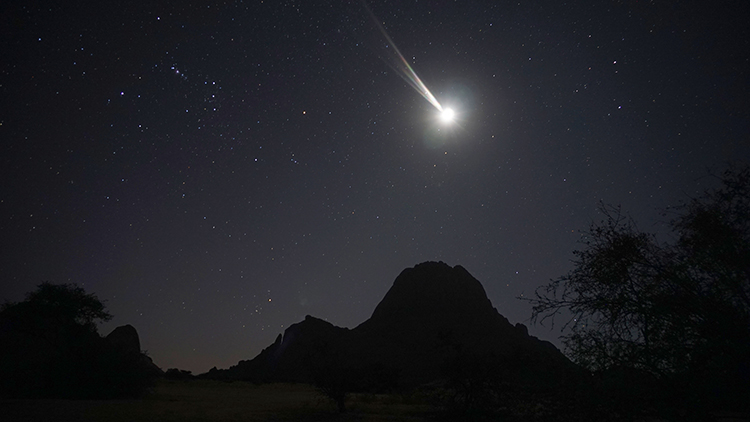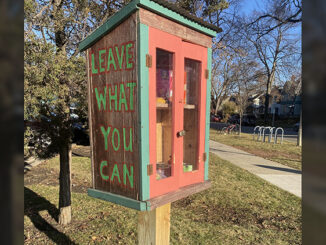
Have you ever seen streaks of light in the night sky? Do you call them shooting stars or falling stars? Did you know that shooting stars, also called falling stars by some, aren’t stars? They are meteoroids that enter Earth’s atmosphere, or the layer of gases that surrounds Earth. Meteoroids are small objects in space that occasionally pass through Earth’s atmosphere. When this happens, it is called a meteor. Meteors move so fast they start to burn. So, when you see a shooting star, it’s hot air glowing behind an object from space.
As Earth revolves around the Sun, it sometimes passes through debris from a comet. The debris forms meteors of different sizes. Meteors can be as small as a grain of sand or the size of your hand. Most meteors burn up completely before they reach Earth’s surface. If a meteor does impact Earth’s surface, it is called a meteorite. Meteorites can form small bowl-shaped craters. Craters are rare, so there’s a chance you haven’t seen one where you live.
No matter where you live, you can witness a meteor shower. A meteor shower is when there are more meteors in the sky than normal. Some meteor showers occur at certain times of the year, making them predictable. At the peak of a meteor shower, you can see up to 60 meteors per hour! The best time to see the most meteors during a meteor shower is between midnight and dawn. A well-known meteor shower is happening this month! Perseid meteor showers start in the middle of July and can be seen until the end of August.
What Can You Do? If possible, make a plan with your parent or guardian to view the Perseid meteor shower or look for shooting stars!
Reading Response Click on this link to respond to your reading. Print out the response page or upload it to your classroom site.
Photo Credit: Sede19/Shutterstock



